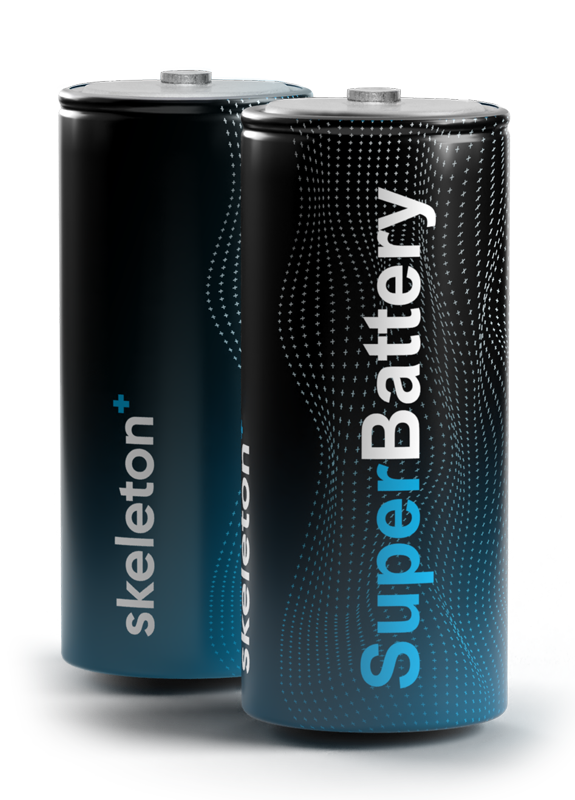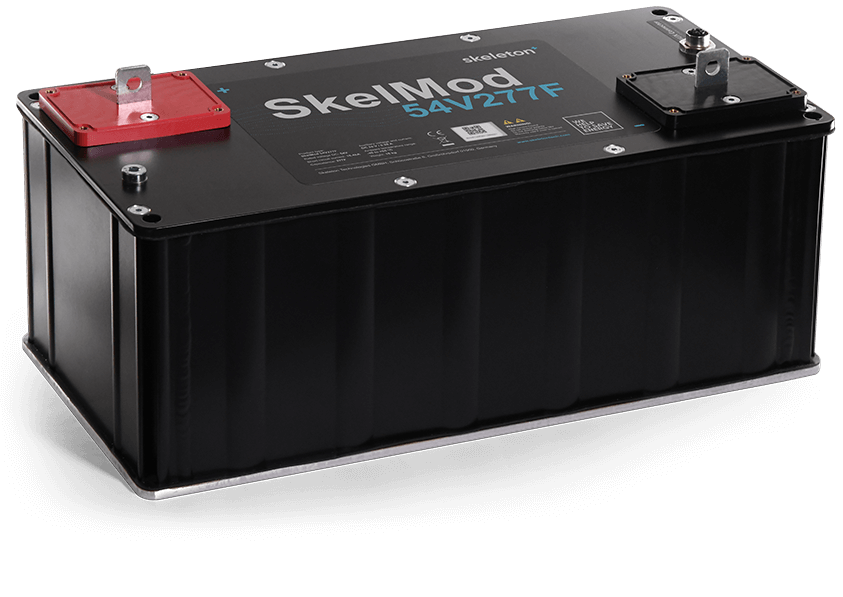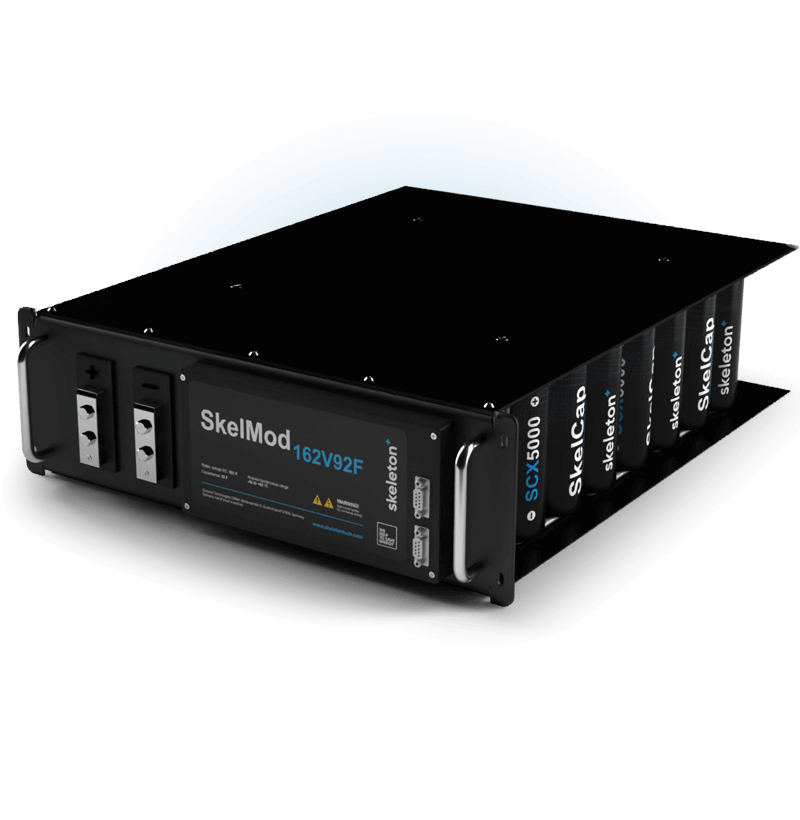SuperBattery
SuperBattery power
for a net-zero future


Skeleton’s technology, providing ultrafast charging at ~< 90 seconds, means the solution can help mining companies reduce emissions without compromising on efficiency.”


What is SuperBattery?
While Ultracapacitors excel at short-term energy storage in the range of milliseconds up to 60 seconds, they lack the energy density to provide meaningful energy storage at longer timescales.
Lithium-Ion batteries, on the other hand, are energy dense but lack the power density to be efficient below 15 minutes charge/discharge time, which leads to battery systems often being overscaled up to 6 times.
Skeleton’s SuperBattery technology has been developed to fill this technological gap in the energy storage market, delivering peak power within 30 seconds, while still being able to support up to 30 min of charge/discharge events due to an energy density of up to 65 Wh/kg.
SuperBattery Cells
High energy throughput, high power, and long lifetime in a safe, industry-standard form factor
Skeleton's SuperBattery energy storage cells are based on our proprietary Curved Graphene raw material, allowing for a long lifetime (50,000 charge-discharge cycles), high power, energy density comparable to high-power batteries, and excellent safety.
The first SuperBattery cells come in the supercapacitor industry standard D60 large cell form factor.
Main parameters
- Voltage: 2.25 V
- ESR (DC 10 ms): 0.6 mOhm
- Specific energy: 62.3 Wh/kg
- Specific power: 28.9 kW/kg

SuperBattery 54V Module
Robust power for wind, intralogistics, medical, and UPS applications
The SkelMod 17V 500F supercapacitor module packs a lot of power in a small package. It's based on our SkelCap supercapacitors with extremely low internal resistance, leading to low cooling requirements.
The small size and strong aluminum housing design of the SkelMod 17V 500F module makes it ideal for use in a number of industries and applications including wind pitch control, AGVs and shuttles fast charging, and medical UPS applications.
Main parameters
SMT17V500F
- Voltage: 17V
- Capacitance: 500 F
- ESR: 1.86 mOhm
- Specific power: 7.06 kW/kg
- Specific energy: 3.6 Wh/kg

SuperBattery 144V Module
Rail-certified, industry-leading power for transportation
The SkelMod 51V 177F supercapacitor module is the only rail-certified supercapacitor module on the market.
It's based on our SkelCap supercapacitors with extremely low internal resistance, making it possible to use the SkelMod 51V 177F module with minimal cooling.
The versatility of the SkelMod 51V module makes it ideal for use in a number of industries and applications including rail voltage stabilization and rail propulsion systems, regenerative power systems, and many more.
The module is certified according to EN 45545-2:2015 + A1:2013 standard for railway applications.
Main parameters
SMA51V177FAF
- Voltage: 51 V
- Capacitance: 177 F
- ESR: 3.3 mOhm
- Specific power: 12.3 kW/kg
- Specific energy: 4.0 Wh/kg










Get in contact with sales team
For finding the best solution contact us directly via email, or by filling in the form.
Send Us a Message
Please fill in the form to the best of your knowledge, and our team we will do their best to provide you with suitable ultracapacitor energy storage for your needs.
Unfortunately, we can't service private customers - thank you for understanding. If you are curious about using ultracapacitors at home, please have a look at our blog post Ultracapacitors vs. Batteries for more information.
